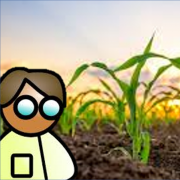Informational Interview with Dr. John Nason, Professor at Iowa State University
Informational Interview by Aimee Schulz, ASPB Conviron Scholar 2018
Dr. Nason is a professor and department chair at Iowa State University. His lab studies the evolutionary relationships and population genetics of figs and fig wasps, and is also interested in the factors influencing gene flow and the resulting impacts on the genetic structure of both plants and insects. He’s been a professor at Iowa State since 2000, and his lab’s website can be found here.
Academic Background:
Dr. Nason always liked fishing as a kid and thought about pursuing a career in marine biology. It wasn’t until an advanced biology course in his senior year of high school that he found his interest in plants:
[My teacher] had us do a plant collection. We had to key out 50 plants and mount them like herbarium sheets. I didn’t know I was interested in this but I totally loved it. I spent a lot of time hiking up canyons I wouldn’t have spent time in. It never occurred me that that was going to influence my undergraduate career. … I went to a local junior college and learned that the more you put something into it, the more you’re going to get out of it.
After finishing out his undergraduate degree at UC Davis, Dr. Nason decided to pursue a PhD at UC Riverside. There he continued to research plants and became interested in population genetics. During his Post Doc at Georgia, he became interested in pollination biology.
Dr. Nason’s first faculty job was at the University of Iowa, but after four years he moved to Iowa State University where he is now department chair. His day-to-day duties include managing his lab where he is the head PI on a large NSF grant in addition to running the department. Of course, there are large things involved with being department chair, but Dr. Nason emphasized that there are countless little things that he does every day.
Career Paths and Success in Graduate School:
When it comes to deciding to pursue a career in academics, Dr. Nason said that he was naturally drawn to academics due to the nature of his plant classes. As for the decision to go to graduate school, Dr. Nason said that his love of learning and enthusiasm carried him into graduate school.
However, he went on to state that success in graduate school was not as simple as a love for learning, and that mentoring and a good lab environment are key.
It’s not just the learning, it’s the environment. … You don’t get into those environments by being apathetic, you have to step out and engage and can’t just wait for it to come to you.
Dr. Nason emphasized the importance of working hard in graduate school but also making sure to relax and have fun for a little bit each week.
One of the most interesting things that Dr. Nason spoke about in our interview was the challenge that his PhD adviser gave him: to come up with a new thesis chapter each week for the first three years. He would spend every Thursday in the library pouring over journals and reading the literature. This allowed him to better understand the literature and learn how to generate PhD quality questions. Dr. Nason’s adviser would then ask him to think about an alternative hypotheses and what he would do if the data did not support his primary hypothesis.
When [you] don’t get what they want, that’s when it gets interesting. Why doesn’t it work? What’s going on? He made me think about all of that from the beginning. The last thing he would do was ask, “How would you pitch it as a PhD project? How would you organize it into five or six paragraphs? How would you logically work through the introduction?”






Leave a Reply
Want to join the discussion?Feel free to contribute!